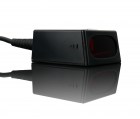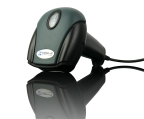Barcodes used in industry, trade, logistics etc. are very different from each other. Despite the fact that their appearance is often very similar, their construction and structure vary considerably.
There are many different types of codes that we can divide into different groups because of:
a) code dimensionality:
- one-dimension codes (1D) - most common codes, consisting of alternating black and white interlacing lines,
- two-dimensional codes (2D) - they consist of black and white squares and rectangles, used most commonly when more information is to be put in the code, e.g. website address etc.
- two-dimensional storied codes - they are an expansion of one-dimensional codes, consisting of several code lines placed one under another,
- complex codes - their structure consists of elements of one-dimensional and two-dimensional codes.
b) type of coded symbols:
- numeric codes - codes, in which only digits are are coded, e.g. EAN-13, EAN-8, UPC-A, UPC-E,
- alphanumeric codes - beside digits also all kinds of signs and symbols are coded in them, such as letters, punctuation marks, special signs. Examples are Code 128, Code 39, Code 93,
c) number of characters coded:
- codes of constant length - codes in which the number of coded characters is constant and unchanging, e.g. EAN-13 code, which always consists of 13 digits,
- codes of variable length - number of coded characters is variable and can be different for the same code type, e.g. Code 128 can both consist of, e.g. 10 or 20 characters,
d) code continuity:
- continuous codes - no gaps between coded characters,
- discreet codes - codes with gaps between coded characters.















